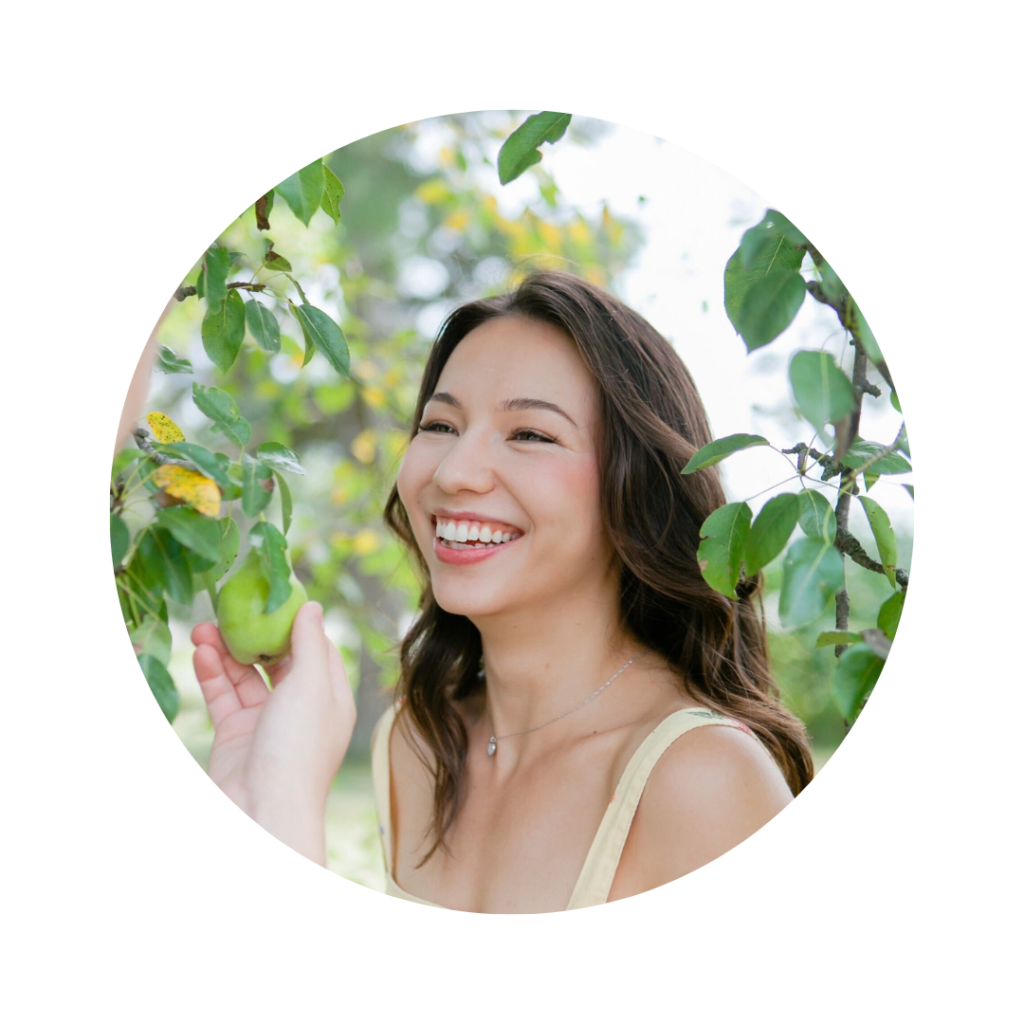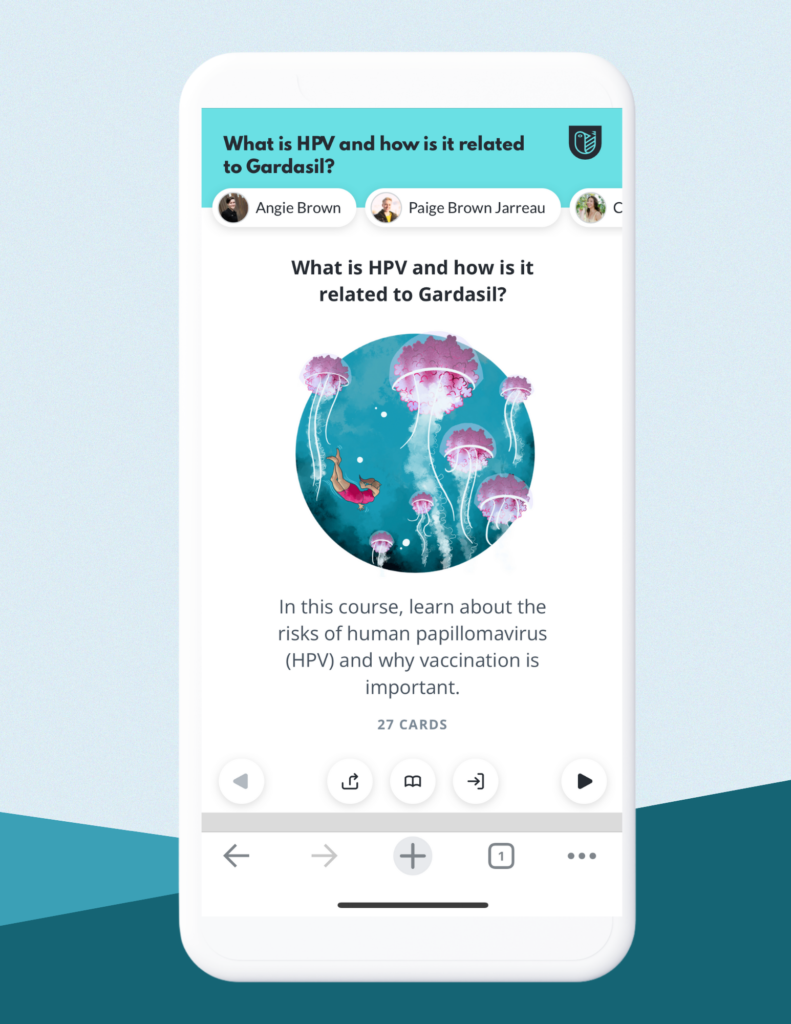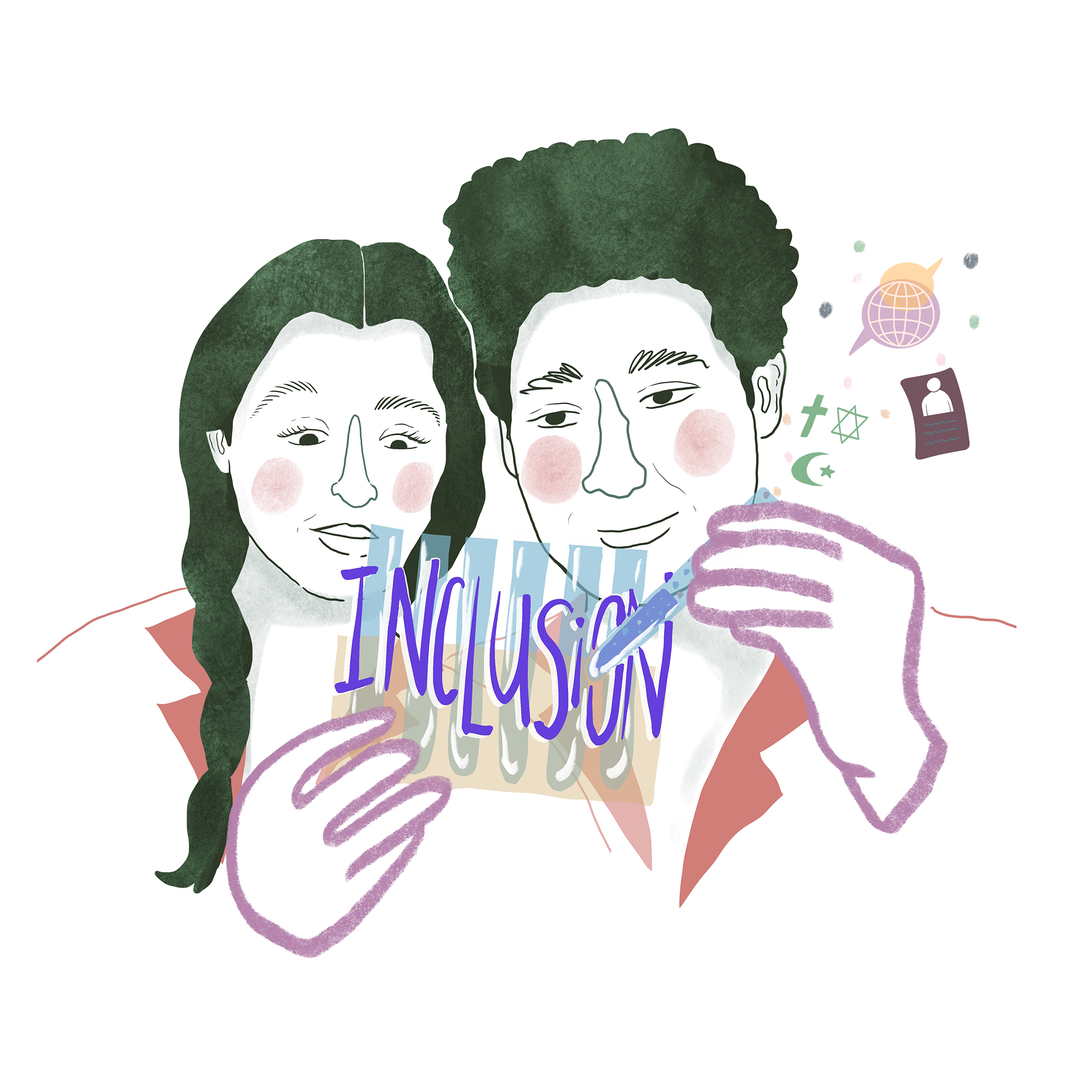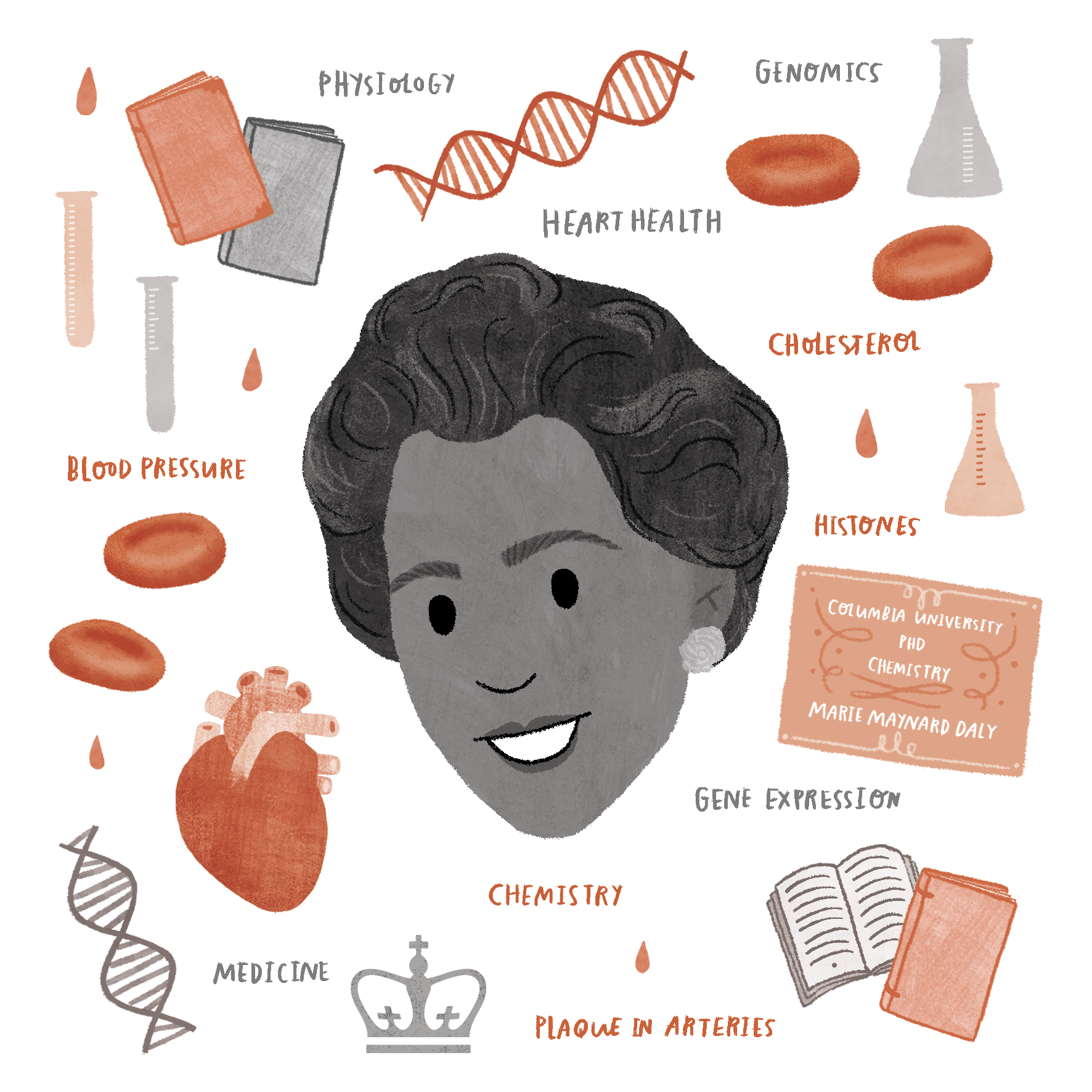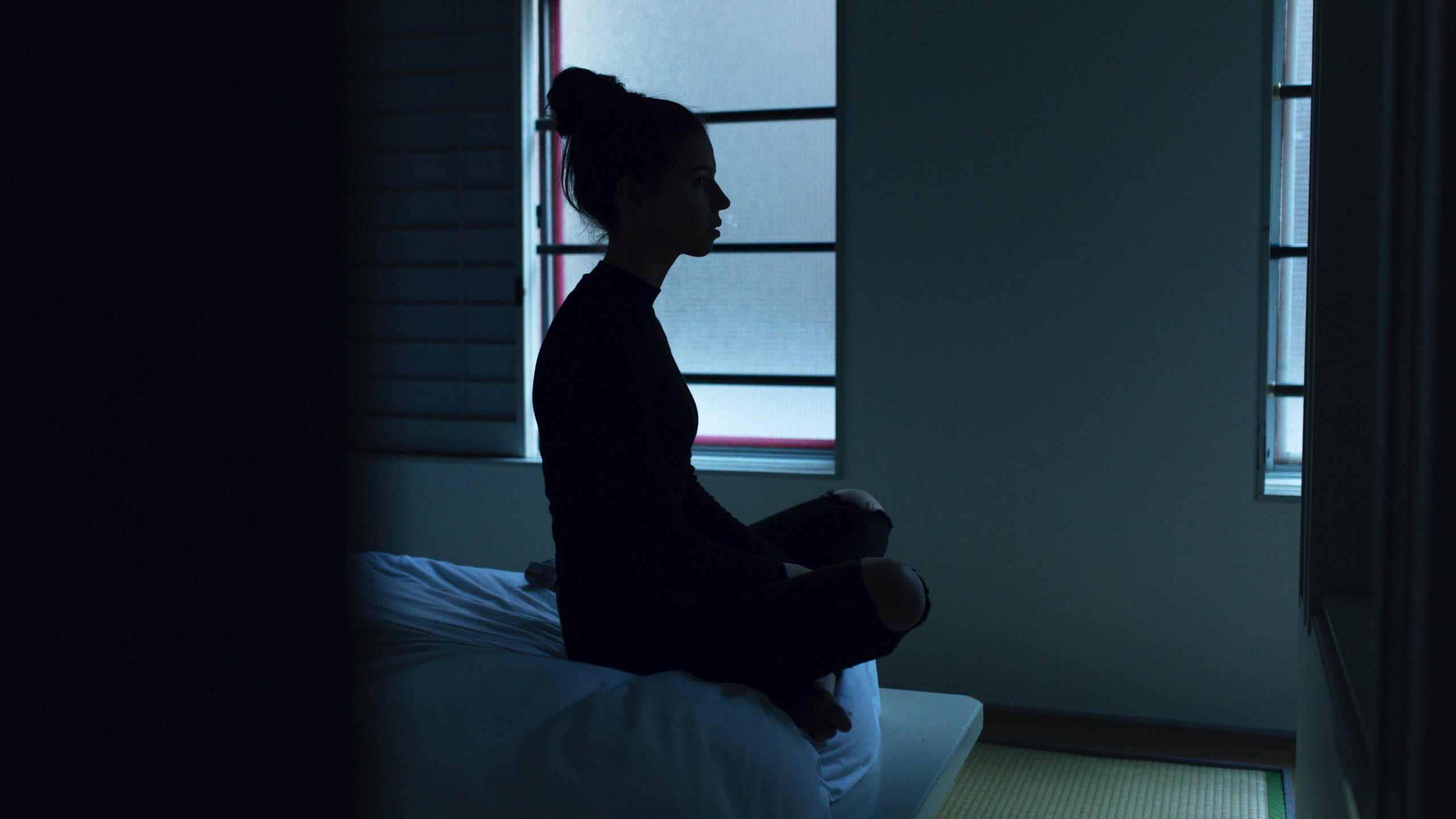The most common sexually transmitted infection (STI) in the United States is human papillomavirus (HPV). Commonly known as genital warts. This infection affected 43 million US residents in 2018, with many infections among people in their late teens and early twenties.
The Lifeology team is creating a series of courses on vaccines. The HPV course was a challenge to make. How do you take an unappealing topic like an STI and create a visually pleasing and engaging Lifeology course? You collaborate of course!
Let’s meet the course illustrator Cassandra Tyson and a few of our team members to find out more…
You recently illustrated the HPV course for Lifeology. What was that process like? Did you enjoy collaborating with the team?
Cassandra: Working with Lifeology was a dream. As I am exploring the world of character development and cartoon illustrating, I found the process challenging but fun! I absolutely loved the collaborative culture Lifeology has. From the very first stages, I was able to brainstorm with the team, contribute ideas and learn what works and what doesn’t.

The storyboard document for the HPV course showing collaborative commentary, visual notes and sketches.
Elaine: We really enjoyed collaborating with Cassandra. When we presented her with the script we started brainstorming visual notes together, we then invited Paige along to join the party and our ideas sparked off each other. Cassandra was great to work with, as she was open to constructive criticism, was able to refine work as needed and really listened to what we wanted. Her turnaround time was also quick and she was very communicative throughout the process.

The storyboard document for the HPV course showing collaborative commentary, visual notes and sketches.
Can you walk us through the illustration process and idea for your favorite image from this course? How did it evolve?
Cassandra: Card 7 would have to be my favorite, not necessarily for the composition but more for how the idea evolved. In terms of composition, I liked the depth the image created and how it emphasized the unknown. The image accompanied the text: “There are over 100 different types of HPV. Many do not cause health problems.” and was meant to accentuate how the dangers of HPV are hidden. Initially the image was drawn with mines, but after review, the mines were thought to potentially evoke fear and were replaced with a more friendly but potentially (but less) harmful image- the jellyfish. I appreciated how the feelings of the audience were of the utmost importance and how much consideration was put into this aspect.

Elaine: I can tell you a little about the process from our side. We typically provide the artist with the final card script in a storyboard format. We sometimes leave visual notes, and in this case, there were some notes added to the script by the writers, Paige Jarreau and Angie Brown. The script is then shared with the artist, we ask them to read through and leave any notes as well as ask any questions, or offer suggestions. Sometimes our artists have great ideas for condensing card scripts.
Let’s find out more about Cassandra. How did you get into illustrating?
Cassandra: From a young age, I had always enjoyed creating something that elicited a strong reaction. These feelings could range from happiness to anger, but I felt the most accomplished when I evoked curiosity. Initially from a background in Physics, I found clear figures allowed technical work to; reach, connect and stimulate a larger audience. Intrigued, I explored the field of illustration and its many applications to the academic world!
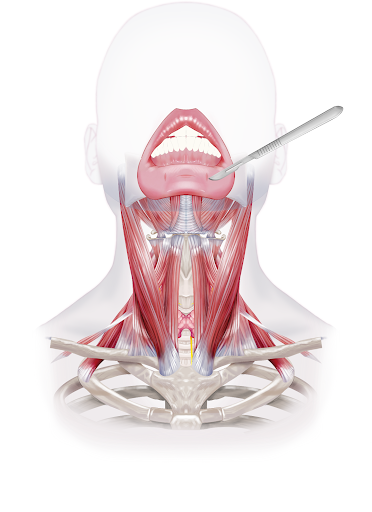
Endoscopic surgery – Cassandra Tyson, 2022.
Image courtesy of Tyson Medical Art.
What are your favorite things to illustrate?
Cassandra: I love to play with lighting, textures and coloring! Using a non-conventional palette can entice readers. In terms of personal work, I love blending classical and modern techniques. I find a familiar image with an added twist can be thought provoking as well as an interesting visual!
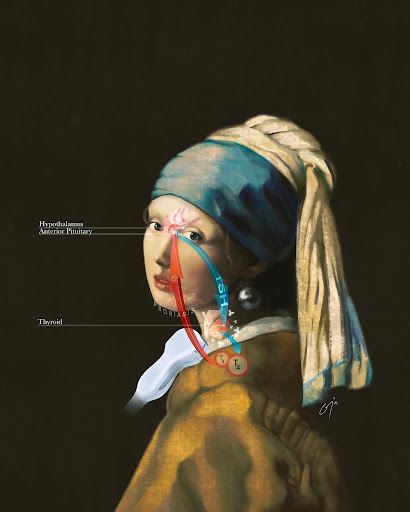
Parody of a Girl with a Pearl Earring – Cassandra Tyson.
Image courtesy of Tyson Medical Art.
